Direct to Dorking | September 10, 2022
- Fredericksburg Pilgrims
- Sep 11, 2022
- 3 min read
Updated: Sep 12, 2022
Today we moved on from our rest in Guildford and headed to Dorking, a 13.9 mile trek in total. Our route today was characterized by many hills!
From left: (1) Pilgrim shoes ready for pilgrim feet! (2, 3) Many uphill trails. We will feel this tomorrow...

Our first stop on the trail was St. Martha-on-the-Hill Church. As the name suggests, the church--accessible only by foot--sits on the top of St. Martha Hill, a knoll on the Greensand Ridge. The Pilgrims' Way crosses the hill from east to west. St. Martha is the only church in the county of Surrey located on the Pilgrims' Way itself. Built originally in the 12th century, it was rebuilt in the mid 19th century with care taken to incorporate many original Norman architectural features. Because of its unique location, many believe that the church was built specifically as a waypoint for the assistance and edification of pilgrims traveling to/from Canterbury and Winchester Cathedrals.
We climbed the incredibly steep hill path to the church and took in the marvelous views from the apex. We met the Verger (caretaker) of the church, Simon, and received a surprise pilgrimage stamp and a historical tour of the church. This was such a privilege!
Exterior views of St. Martha-on-the-Hill.
From left: (1) Entrance to St. Martha-on-the-Hill. (2) The Verger Simon welcomed us and conversed about the church's history. (3) Twelfth century (!) baptismal font. (4) Stained glass image of St. Thomas Becket.
The view from St. Martha-on-the-Hill was gorgeous! This "seven county view" looks across the Tillingbourne Valley, an Industrial Age site of gunpowder and currency paper production. It is said that, on a clear day, you can see seven English counties from the hilltop.
View into the Tillingbourne Valley.
The next town we entered was Shere, a village astride the River Tillingbourne, where we stopped for lunch at the Dabbling Duck cafe. Shere was so quaint and beautiful! Here are some scenes:
While we were in Shere, we visited St. James Church. The current structure dates to around 1190, but there was most likely a former Saxon church on the site as well.
From left: (1, 2) Exterior of St. James Church, Shere. (3) Inside St. James Church.

St. James was home to several interesting relics and stories. To the right is a two-inch tall Madonna and child statue from the 13th century, which may have fallen from the top of a pilgrim's staff!
Connected to the north wall of the chancel (near the altar), a small anchorite's cell once existed. An anchorite/anchoress is a monastic man or woman who withdraws from normal society and is permanently enclosed in a cell connected to a church. Their religious consecration rite closely resembles a funeral rite -- the idea being that they were 'dead to the world.'
The Anchoress of Shere, who lived in the cell connected to St. James, was Christine Carpenter, and she was walled into her cell in 1329. Through a grate on the outside wall of her cell, she received gifts of food from the community, and through a narrow squint and quatrefoil opening in the wall, she could view mass and receive the Eucharist.
After Shere, we continued our hike. Other features of our route today were brilliantly green expansive fields and beautiful English cottages.
Green views.
Slideshow: Houses in Guildford and in Dorking.
After Shere, we arrived in Dorking and first stopped at St. Martin's Church. There, we happened upon St. Martin's Heritage Open Day presentation. Heritage Open Days are free, volunteer-led celebrations of local UK culture and history, occurring every September. This year, the heritage theme was "Astounding Inventions." As a part of the Mole Valley Heritage Open Days, St. Martin's hosted an event on their church's history, with a spotlight on the astounding invention of the church organ. St. Martin's organ was built in 1831. We conversed with the friendly volunteers in the church and spoke about the church's history will eating much-appreciated cake and tea.
Top row: (1) Left: exterior of St. Martin's Church, Dorking. (2) Right: Inside St. Martin's. Bottom row: Art inside St. Martin's.

St. Martin's parishioners conversing with us about the church.
We then walked up the street to our lodging for the night at the White Horse Inn. Dinner and drinks there were great! Our total travel time today was 8 hours and 25 minutes, with a moving time of 5 hours and 26 minutes.









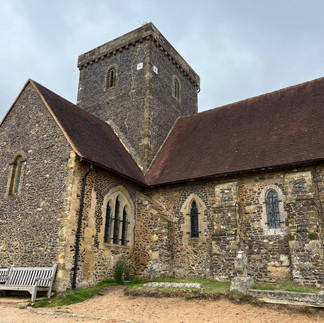

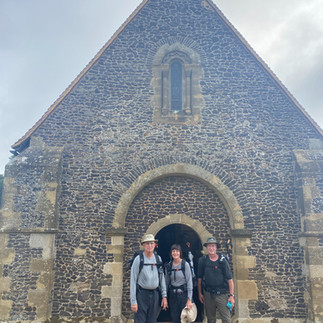



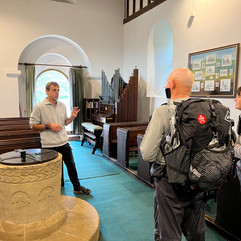







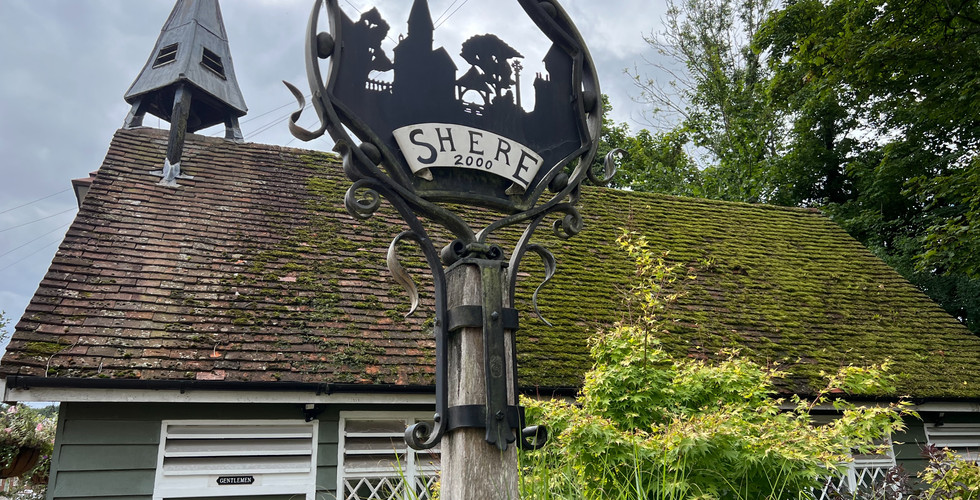











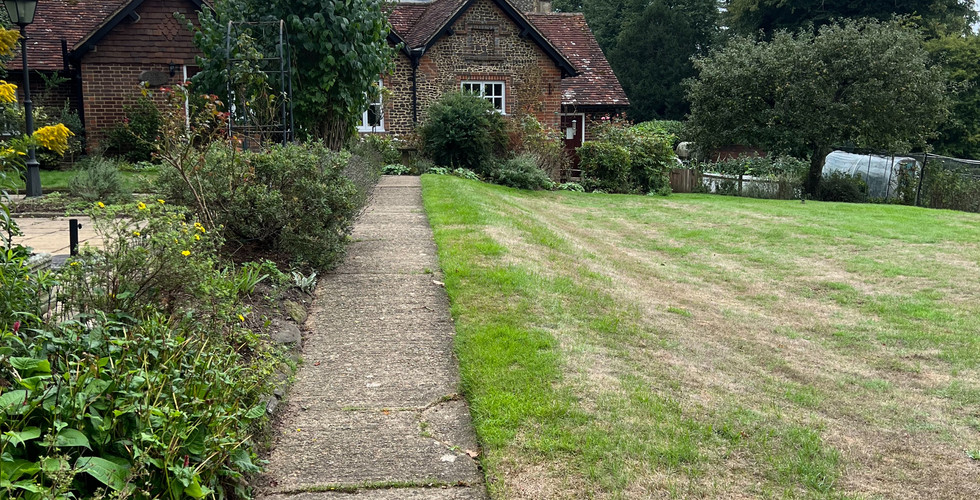

























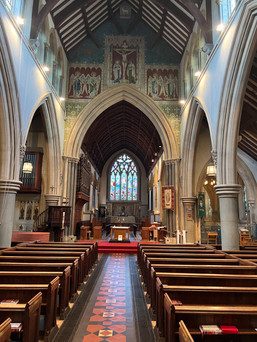




Comments